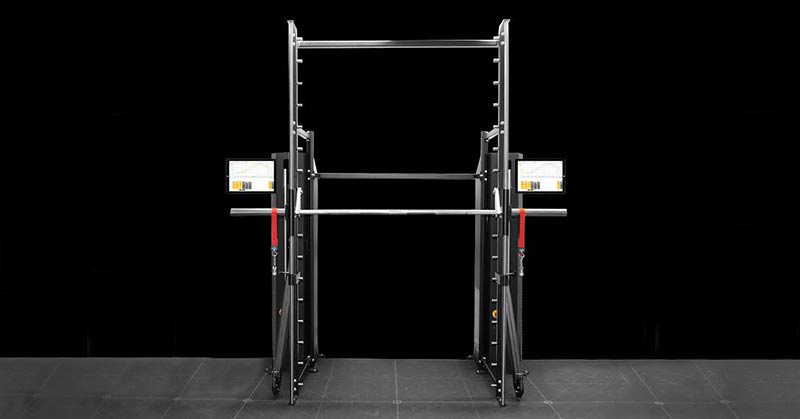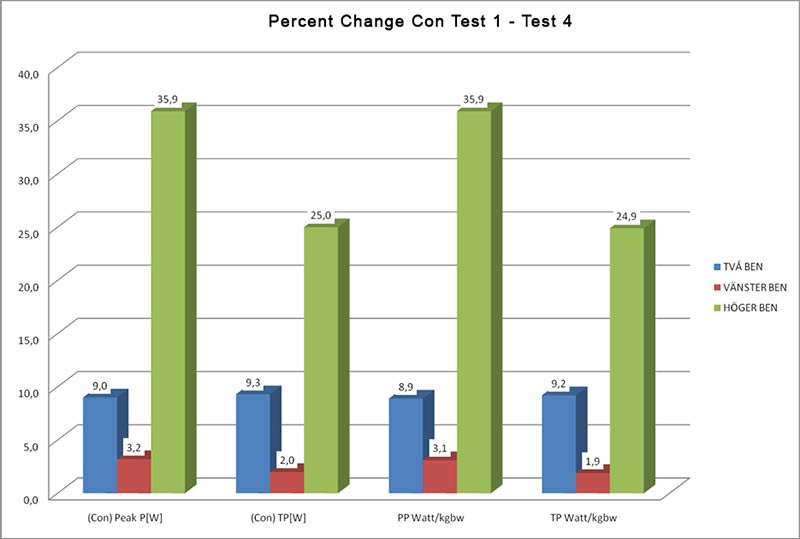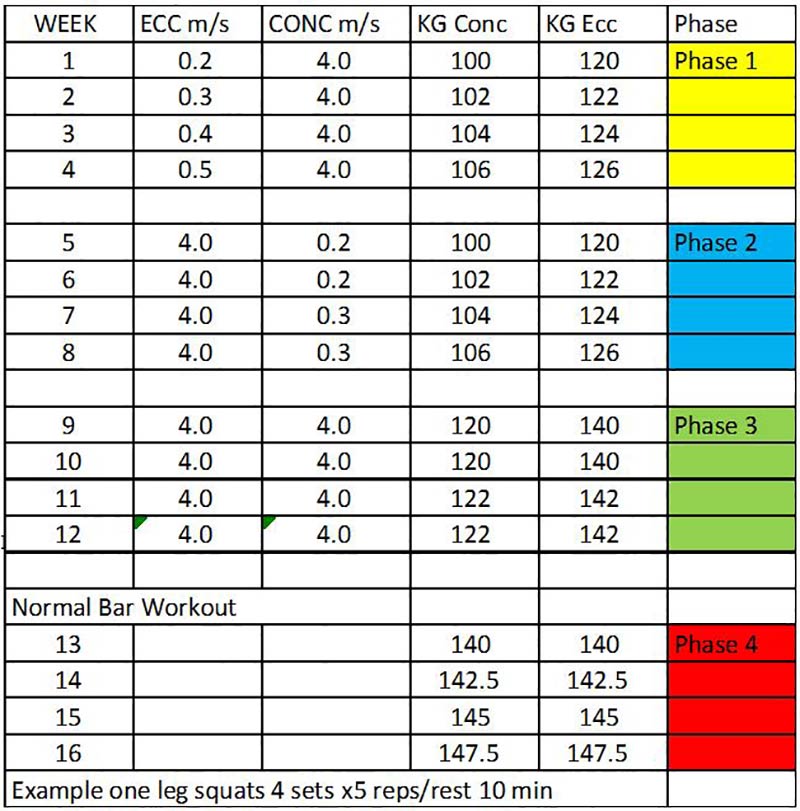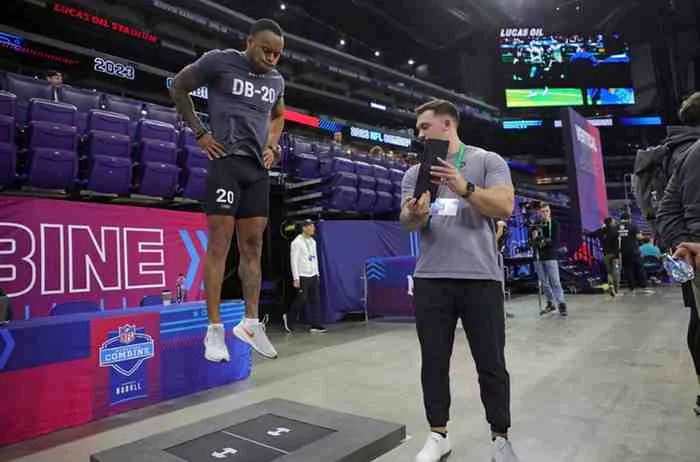[mashshare]

In sports training, coaches and trainers are constantly searching for the way to attain greater returns on work done and minimize the stress on the athlete’s neuromuscular system. One of the most difficult areas to work in is the development of the most critical of human performance factors in dynamic sports: Power.
Power development is totally dependent on the speed of movement, and therefore creates numerous problems for the coach and athlete. Once an athlete starts to accelerate a mass, such as a normal barbell, they create high amounts of inertia. This needs to be slowed down—for instance, in a push press—or absorbed, such as landing from a jump squat. Both speed reduction and returning mass absorption place extreme strain on the body’s soft tissues and skeleton. This strain doesn’t just eventually lead to overuse injuries—it is also a very inefficient way of training.
This problem is drastically increased as trainers decrease load and increase speed. So, when you are moving in the direction you need to develop power, you are restricted by the equipment. Another problem is that you cannot change the weight in the eccentric phase as you can in the concentric when using traditional equipment.
Developing Power With the 1080 Quantum
The 1080 Quantum doesn’t have these problems because of its patented No Flying Weight mode, which is a normal weight with the ability to stop inertia when you stop the movement. Therefore, an athlete using the 1080 Quantum can accelerate through the body’s whole range of motion, increasing the work phase considerably. Additionally, because there’s no mass to stop, there’s no undue stress on joints and ligaments.
As you add weight in the eccentric phase, every repetition becomes more efficient because humans are 30 percent stronger in the eccentric phase. Normally, athletes would have to do eccentric training in a separate session. However, with the 1080 Quantum, these phases can be combined in the same session, giving the athlete a much more functional training session that’s very close to what is actually done in the sporting arena. The 1080 Quantum has enabled extremely large gains in power development. The most striking difference is the amount of work, or rather the lack of work, done to obtain these results.
To test this, I used a 1080 Quantum Syncro system, which includes two 1080 Quantum units and a smith rack. The study subject was an international-level 110m hurdler who participated in two training sessions a week for six weeks.
The robotic technology embedded in the 1080 Quantum allows for different resistance settings, and the ability to set load and speed independent of the concentric and eccentric phases of an exercise or movement. The exercise used was a single leg squat. In the concentric phase, an isokinetic (speed limit) setting was used. This can also be called variable resistance, since the load of the system is matched by what the athlete is able to generate. In the eccentric phase, a constant load was used.
The athlete saw an increase of power when he used the 1080 Quantum for exercises such as con-ecc squats and one-legged squats, in three sets of five repetitions twice a week for a period of six weeks, with loads no higher than 180 pounds. He got to levels that were never attainable using conventional training equipment and methods.
Using the 1080 Quantum, the athlete got to power levels that were never before attainable. Share on XOne of the differences in equipment is that the 1080 allows acceleration in the eccentric phase—which recruits fast twitch fibers—and then decreases the speed allowed in the concentric phase. But, because the athlete is trying to accelerate during the concentric phase, they are only using fast twitch fibers. As we have decreased the speed allowed, we can then increase the time (time under tension) in which we are using fast twitch fibers considerably, compared to traditional weights. This leads to a much higher/longer activation of fast twitch fibers compared to the use of a traditional weight, where we have only a very short time period in which we have contact with the weight before it becomes airborne! This dramatic increase in the activation of fast twitch fibers causes greater work load and thus, the athlete is unable to produce the necessary power for more than three sets of five repetitions before fatigue sets in.

- Blue – two legs
- Red – left leg
- Green – Right leg
- Con Peak power
- Con TP(W)
- PP Watt/kgBW
- TP Watt/kgBW
Developing a Protocol
As the 1080 system is fully functional, you can apply this principle to any exercise you want. You can use a custom-made smith machine to work traditional exercises in the vertical plane and then utilize the 1080’s 5m off cable to work a host of horizontal plane movements. Coaches at the Malmo Sports Academy in Sweden—including Kenneth Riggberger, myself, and others—use a method of accumulation and intensification over periods ranging from two to four weeks, depending on the time of year and goals for a specific period.
We work a great deal to first increase capacity (strength) at slow speeds in the eccentric phase, and then speed up the eccentric phase as well as the concentric phase. The ability to rapidly decelerate in the eccentric phase is of primary importance, because it is where most athletes are lacking when tested.
We have found that, when we alter the natural phases of how a resistance works in either isokinetic or isotonic mode, we need to return to a normal barbell and load in order to “re-program” the neuro-muscular system. Below is the protocol used by Coach Riggberger that has produced Olympic finalists. The results of the intervention with the 110m hurdler are also from the Malmo Sports Academy.

The chart clearly shows the speeds in the eccentric phases for Phase 1 and Phase 2, demonstrating how we speed up eccentric and slow down concentric speeds in order to work the time-under-tension portion even harder.
We have just finished testing a protocol using a first phase of 0.2 m/s and 0.3-0.5 m/s in the concentric phase in order to work two extremes in each repetition. This is extremely hard, and after two to three sets of five reps, the athletes are totally exhausted. We then work eccentric overload of up to +30% and slow speeds (you can even add an isometric stop in bottom position) and also limit speed and load (as we have higher in the eccentric) in the concentric phase to increase the time under tension dramatically. The rest period is 10 minutes between sets because, otherwise, the athlete simply doesn’t recover enough to complete three sets with the desired effect. In initial trials, this has given us unprecedented strength gains and also big gains in power, if done in short periods of up to eight to 10 sessions.
The potential for strength and power gains is enormous. Any strength and conditioning staff that is looking at getting the biggest bang for their buck should look into the 1080 Quantum system and what it can do for your strength facility.
Since you’re here…
…we have a small favor to ask. More people are reading SimpliFaster than ever, and each week we bring you compelling content from coaches, sport scientists, and physiotherapists who are devoted to building better athletes. Please take a moment to share the articles on social media, engage the authors with questions and comments below, and link to articles when appropriate if you have a blog or participate on forums of related topics. — SF
[mashshare]




